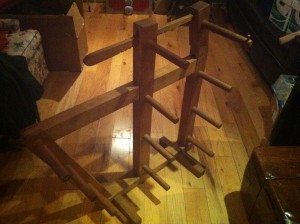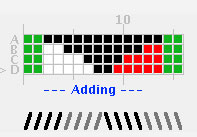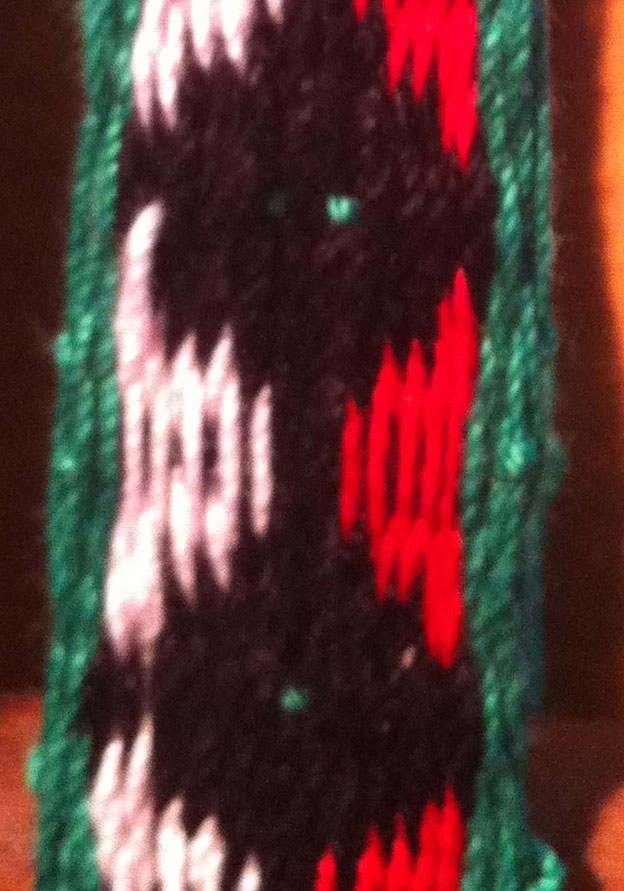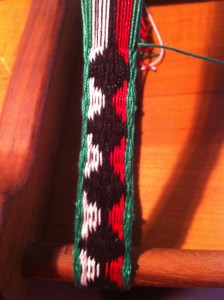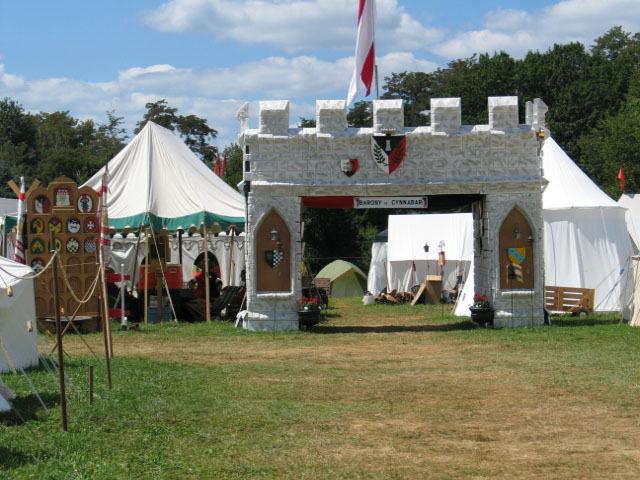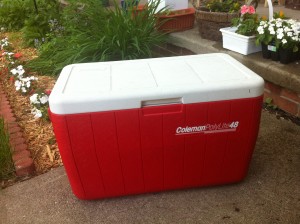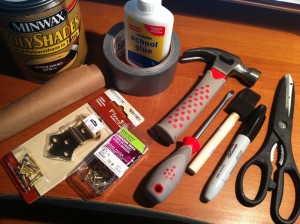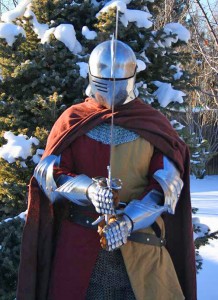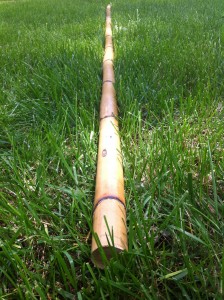As a newcomer to the SCA, virtually everything is a discovery. Take tablet weaving, for example. It all began when I wanted to make a tunic. I looked online for a simple pattern, and eventually discovered the Bocksten Tunic (an authentic pattern from one of the best-preserved medieval tunics in Europe). In the discussion about the tunic, I found a reference to something called “tablet weaving” for “making authentic trim from scratch.” So after I made my first linen Bocksten Tunic, I sought out tablet weaving … and discovered a fascinating craft!
Tablet weaving is an ancient method of creating woven trims, straps, and belts. You use cards with holes punched in them, and thread woven through the holes, to create patterns — from the simple to the elaborate. You can tablet weave without any specialized tools — at it’s most basic, you need only cards and thread. I think this simplicity is what sold me — I could try it out without having to buy anything fancy.

My First Tablet Weaving Attempt
So after studying various online documents that explained tablet weaving (here’s the one I found the most helpful as a complete beginner), I gave it a try. I made the tablets (cards) from some of my son’s old flashcards and used a vise and clamp to hold the ends of my threads. For thread, I used some $2 crochet thread from Joann’s. I threaded my cards, tied knots in both ends, and turned the cards. You can see my first attempt here. I was quite amazed at how well it turned out, and it encouraged me to keep trying.
I continued to work on the simple diagonal pattern, and eventually made enough to trim the sleeves of that Bocksten tunic I mentioned earlier. It looked very nice, but I couldn’t help but think how much better it would look if I had enough trim to do the neckline and/or hemline. But my vise/clamp method was clunky … I decided I needed an actual tablet weaving loom.
Initially I thought about making one, but realized I just didn’t know enough about the craft to do it properly. So after some research, I bought a lovely walnut loom on Etsy — it’s on the small side and very portable, which is just want I wanted. I mean, wouldn’t think be a great thing to do on the porch or at an event?

My Second Attempt at Tablet Weaving
The new loom arrived two day ago, and I haven’t been able to put it down since. The loom came pre-warped with what is called a “Dragon’s Breath” pattern, and I eagerly began to weave it. Wow! It’s just beautiful — it really looked like flames. You can see some of it pictured here. When I finished, I had almost two yards of gorgeous trim … and I did it in just hours.
Today I decided to make more trim — I loved the Dragon’s Breath pattern, but I decided to change the black to white, and I’m now calling it the “Dragon Army” pattern in honor of the Middle Kingdom’s Dragon Army and their colors of red and white. The trim is for Gregor — I intend to make him a red linen Bocksten tunic with the trim to wear at Pennsic War! It took HOURS to thread the loom — that’s definitely not my favorite part. But the good news is that I threaded it correctly and the pattern looks amazing, even better than the first one. Here it is so far:

I just love it! Of course, I need to continue to work on keeping to the pattern. Every once in a while I forgot my place, or just turn the cards the wrong way, and I end up with a little mistake. You can see it above if you look closely. Thankfully, this pattern is very forgiving of mistakes. But I must strive to get better at not making them. I have already come so far, so I believe I can do this!
In addition to trying more complex patterns, I want to try to weave letters. Wouldn’t it look great to have some trim that said, “Honor Before Victory?”
Some Helpful Tablet Weaving Links:

